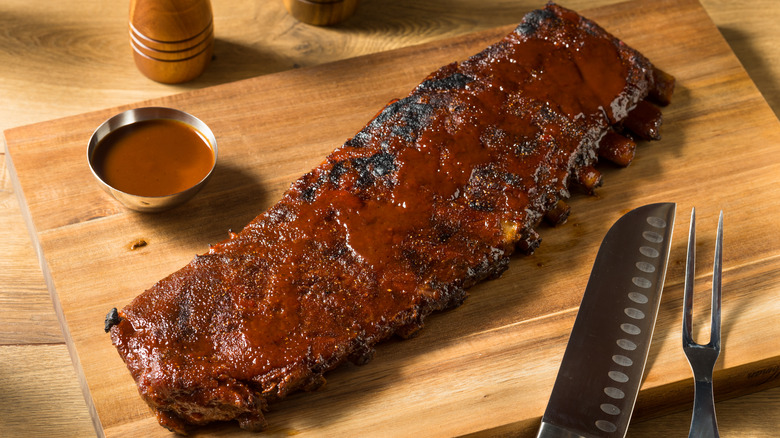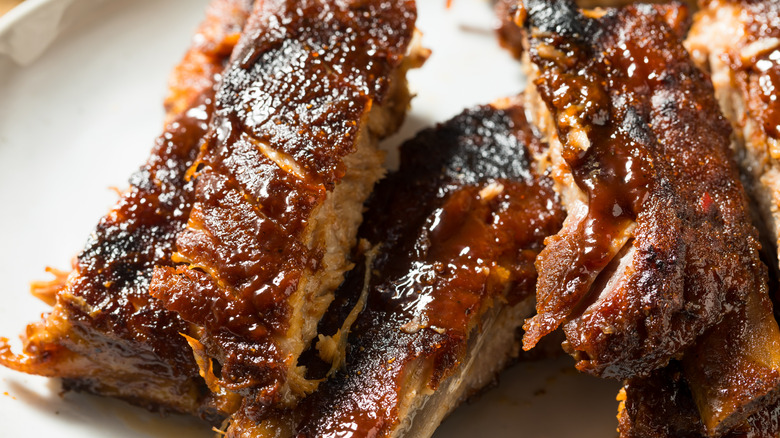How St. Louis-Style Ribs Were Invented
When you think of St. Louis, you probably think of landmarks like the Gateway Arch. When you think of St. Louis food, you may think about Provel cheese and gooey butter cake. On top of those tasty regional staples, the city also is also known for its style of barbecue. Although it may not be as popular as neighboring Kansas City-style barbecue, according to MasterClass, they are related because both cities were once "meatpacking hubs." What makes St. Louis' style unique is that it's all about the sauce; one that is tomato-based and sweet. Instead of adding a dry rub to the meat and smoking it, St. Louis-style is known for grilling the meat then adding sauce. Plus, one of the first barbecue sauces in the county was born in St. Louis: Maull's BBQ Sauce, launched in 1926.
This is why St. Louis is one of the country's largest consumers of barbecue sauce, per St. Louis Magazine. The city is also known for its love of pork: pork steak, pork butts, and even pork snoots.
Look for distinctive shape
St. Louis even has its own style of pork ribs. So what makes these ribs different? MasterClass explains that St. Louis-style ribs were made popular by smaller meatpackers between the 1930s and the 1960s. Instead of baby back ribs, they use pork spare ribs. Then they cut the spare ribs in a rectangle shape, which leaves more meat on the bone and less cartilage.
The pork experts at Tender Belly state that St. Louis-style spare ribs are bigger and have more meat than baby back ribs. Baby back ribs are the upper ribs near the spine area, whereas spare ribs come from the belly area of the pig. St. Louis-style spare ribs are flatter, so they are easier to brown. They also have more fat, making them juicy, tender, and full of flavor. So next time you are in the mood for ribs, ask your butcher for St. Louis-style spare ribs. Just don't forget the all-important sauce.

